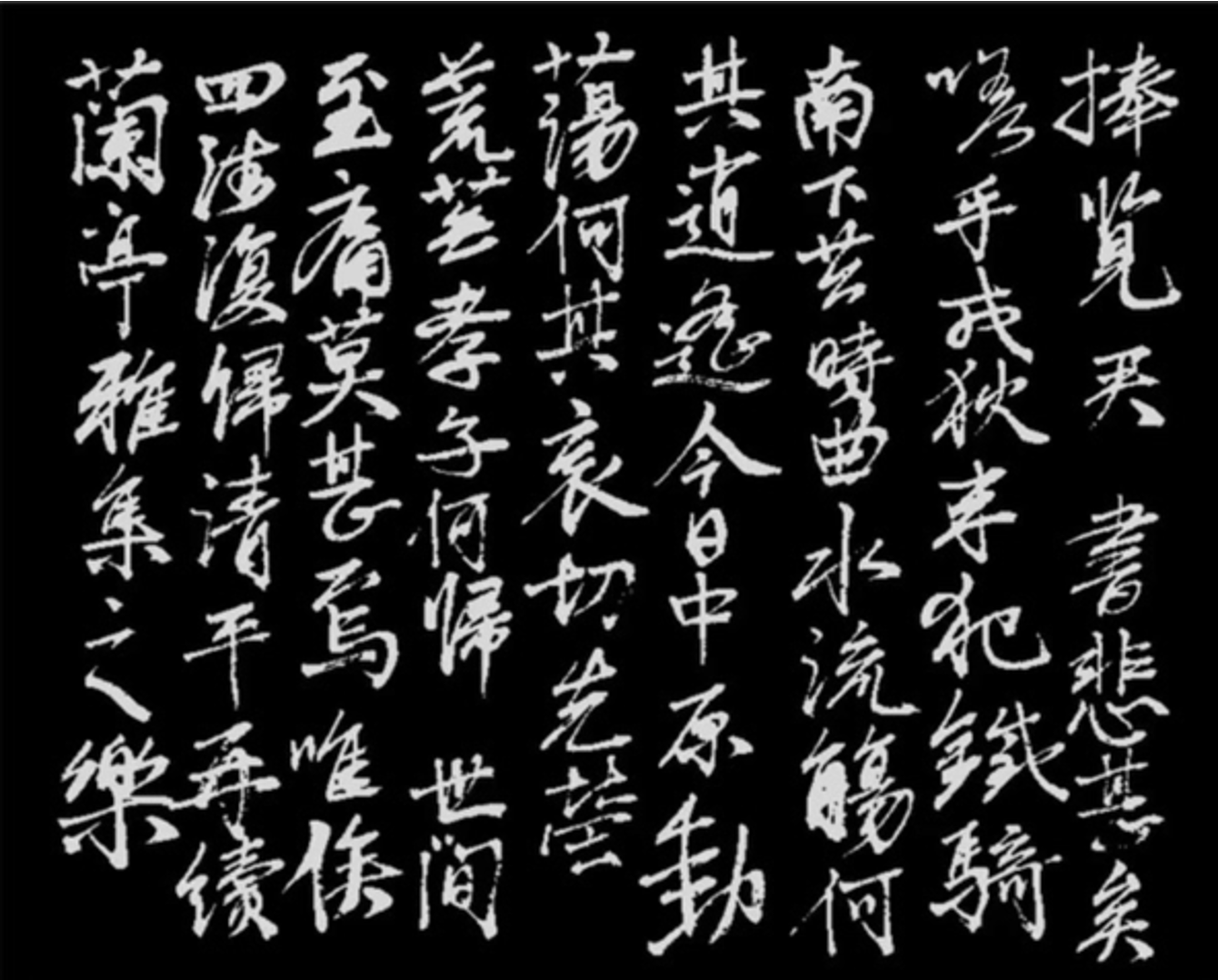The Chinese Calligraphy course at MIT is a project-based learning course that emphasizes practice, application, and reflection. Students engage in a variety of creative and research-driven projects throughout the semester. These projects allow students to explore calligraphy not only as a writing system but also as a form of cultural expression and interdisciplinary inquiry.
Below are four representative projects selected from the course. Together, they demonstrate how students learn through hands-on activities, observation, research, and creative expression.
Project 1: Calligraphy in Motion—A Creative Video Exploration
This project invites students to produce a short video that incorporates elements of Chinese calligraphy. It can be completed individually or in small groups (up to three members). The video should express each student’s personal understanding and engagement with the art of calligraphy.
Students are encouraged to explore interdisciplinary themes, integrating calligraphy with areas such as science, engineering, or daily life. Creativity and innovation are emphasized.
The final video should be no more than six minutes in length. Submissions are shared with the class at the end of the semester to celebrate each student’s creative journey.
Student Submission Examples
- Brush Stand
- Fashion and Calligraphy
Project 2: Expressing the Self Through Script—Final Calligraphy Artwork
This culminating project enables students to synthesize all that they’ve learned and practiced throughout the semester. Each student creates a complete, personal calligraphy piece, using regular script (kaishu) or semi-cursive script (xingshu) to demonstrate their foundational skills.
The content must include at least four Chinese characters and may come from a proverb, a famous quote, a poem, or another meaningful passage. If students are uncertain about what to write, they are encouraged to consult the instructor.
Each piece must include two parts:
- Main text: The phrase or passage selected by the student
- Inscription (落款): Written in the format “Time+Name書于+Location.” Students may add a personal seal if they have one.
Evaluation Criteria:
- Brush Technique: Control, consistency, strength, and variation in strokes
- Character Structure: Balance and clarity in the shape and proportion of characters
- Composition: Overall layout and use of space, including placement of the main text and inscription
- Content and Expression: Thoughtful selection of content and personal engagement with the work
On the final day of class, students present their finished work during an in-class exhibition. Each student briefly introduces their piece and discusses the process behind it. The exhibition also serves as a celebration of the semester’s achievements.
Student Submission Example

Project 3: Masterpieces of Running Script—A Collaborative Research Project
In this collaborative project, students explore the art and cultural significance of three masterpieces of running script (xingshu). Students are divided into groups of 2–3, with each group assigned one of the following classic works:
- Preface to the Poems Collected from the Orchid Pavilion by Wang Xizhi
- Draft of a Requiem to My Nephew by Yan Zhenqing
- Cold Food Observance by Su Dongpo
Each group conducts detailed research through online sources and group discussions and presents its findings in class. Presentations address the following six guiding questions:
- Calligrapher’s Background: Who was the calligrapher? What was their historical context and social role?
- Content of the Work: What does the piece say? Provide an English translation.
- Context and Emotion: Under what circumstances was the work written? What feelings or intentions are conveyed?
- Significance: Why is this work considered a masterpiece? What is its greatest artistic or historical value?
- Formal Analysis: Analyze selected characters or lines, focusing on brush technique, rhythm, or variation.
- Personal and Group Reflection: Share your own thoughts and impressions of the work as a group.
Each group delivers a 20-minute in-class presentation supported by a PowerPoint file. Presentations should be visually engaging and clearly structured.
Project 4: Inspired by Xu Bing—Inventing English “Characters”
This creative project is inspired by the conceptual work of Xu Bing, who is known for exploring the boundaries between language, art, and meaning. Students study Xu Bing’s installations, such as “Book from the Sky”—composed of fictitious but character-like symbols—and “Square Word Calligraphy,” where English words are stylized into the form of Chinese characters.
After analyzing these examples, students create their own English “characters” by applying traditional Chinese brush techniques, stroke order, and compositional logic to English words. The goal is to experiment with legibility, form, and cultural hybridity.
Students share and reflect on their invented characters in class. This project encourages them to think critically about writing systems and to challenge their own assumptions about language, structure, and communication.
Conclusion
These four projects represent only part of the broader, practice-centered design of this course. Project-based learning is woven throughout the semester, from in-class exercises to independent explorations. Through calligraphy, students engage deeply with both artistic tradition and personal creativity.










